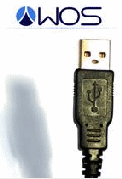You never know when you might need an easily portable online portfolio, do you? Maybe at a technical conference ….
A business card dropped face-up on the laptop keyboard. Chelsea glanced at the name on the over-sized square — ProteoLogix — and looked up at the woman standing in front of her. “Pretty impressive card,” she said. “Must weigh almost an ounce. I hope you don’t carry more than two or three of these at a time. Bad for your back.”
Opportunity Knocking
“Ms. Jackson. You made several interesting comments in the Crystal Room Content Management seminar. About the tradeoffs involved in managing research, procedural, and marketing information for a fast-growing tech startup. Have you ever actually done what you described? ”“Dr…” Chelsea checked the name on the card, a little annoyed. “Kravinzki, is it? Excuse me, but who are you? Have we met before?”
“No. But we need to talk, and I haven’t much time. Let me give you a quick rundown of what I’m looking for. ProteoLogix is developing a series of products to provide quick diagnostic profiles for patients with diabetes-related complications in urgent care settings. And we need to come up with a way to manage the tons of data our researchers generate every week. To store it, retrieve it, track it, distribute it to the right people, publish selected pieces of it in the right places, and God-only-knows what else. Have you ever worked in a setting like that?”
Opportunity Recognition
Oh. ProteoLogix. The well-financed, extensively publicized biotech startup that was bound to go public any month now. That ProteoLogix. Chelsea stood up, considerably less annoyed, and extended her hand. “Good to meet you, Dr. Kravinzki. Won’t you sit down?”Opportunity Challenge
“No time. My plane leaves in three hours, and we’re 30 minutes from the airport. I’ll give you 15 minutes to convince me that you can help us with our data explosion. That is, if you’re interested…”
There it is. Chelsea’s trapped on the edge of a cavernous exhibition hall, in a WiFi-free zone, with anything remotely resembling a portfolio at least 10 or 12 minutes away, in her room on the 75th floor. What will she do?
Opportunity Seized
Chelsea sat down with Dr. Krivinzki, located one of her laptop’s USB ports, and inserted the 2GB WOS (Webserver on a Stick) she always carried, the stick where she had thoughtfully installed a series of prototype content management systems, including one with a sample biotech taxonomy. Ten minutes later, she had a verbal commitment and an appointment at ProteoLogix’s Boston campus. Nice save!
What is WOS?

- The basic version (WOS Portable) is free and open source, released under the GNU/GPL.
- WOS Portable comes with a selectable bunch of preinstalled software, including
- CM systems (TYPO3, Joomla!, Drupal, and Mambo)
- Blogging software (WordPress)
- A learning management system (Moodle)
- An e-commerce management system (OS Commerce)
- Database administration (PHPMyAdmin)
- Wiki software (MediaWiki)
- WOS Portable works well for online content writers who have to present their work in situations where connectivity is limited.
- WOS works on any post-Windows 98 box with a functioning USB port.
- Installation is painless. Check out the WOS Mixer download page.
Any limitations?
- Not so promising for sites based on Active Server pages. (I haven’t tested this, but It seems reasonable for me to assume that this Microsoft technology might not play well on a stick with its open-source neighbors.)
- On boxes with USB 1.1 ports, things run very slowly. For reasonable speed, stick to USB 2.0.
- It’s best not to use the standard webserver port (80) for WOS, so that WOS doesn’t collide with a possible webserver installation on the host computer. The WOS wiki provides instructions for changing the Apache port.
Will it work for you?
For the cost of a 1GB USB stick (which can be had for less than $30) and a few hours of investigation, you can add a pocket-sized web project portfolio that may help you seize an unexpected opportunity. If you decide to try WOS, please let me know how it works for you.
[tags]webserver on a stick,WOS,portfolio[/tags]